HOME & Kitchen
The Best Fire Extinguisher

After 50+ hours of research and expert consultations, we recommend the First Alert PRO5 fire extinguisher. It’s affordable, UL-certified, and effective for home use.
Menu
Everything we recommend
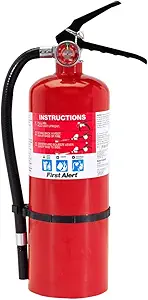
First Alert PRO5
A fine extinguisher
The First Alert model is easy to handle, effective against all common fires, and exceeds home safety recommendations. It’s also widely available.
The First Alert PRO51 handles all common household fires and stands out with its reusability, sturdy metal valve, and manageable weight. It exceeds NFPA size recommendations and is widely available at retailers like Ace, Lowe’s, Target, and Walmart.
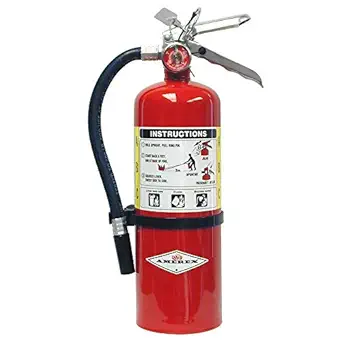
Amerex B402
Almost identical, harder to find
This model has the same features as our top pick but is less available at brick-and-mortar retailers.
If the First Alert PRO5 is unavailable or too expensive, the Amerex B402 is a great alternative. It’s similar in weight, fire coverage, and recharging capability, but has less in-store availability.

First Alert HOME1
A smaller extinguisher
This smaller extinguisher is ideal for high-risk areas, handling all common home fires despite its half the capacity of our top pick.
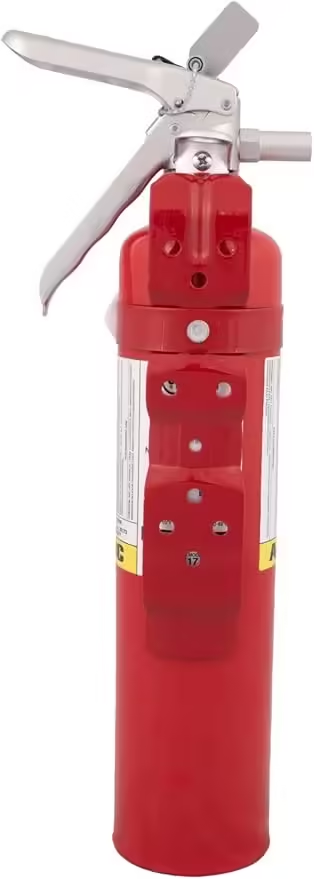
Amerex B417T
Another small option
A great option for small, high-risk areas, this is a compact version of our runner-up, with the same UL rating as the First Alert HOME 1.
For smaller spaces like kitchens, cars, or rooms with a fireplace, we recommend the First Alert HOME1 or DHOME1. These compact extinguishers are UL-approved, rechargeable, and effective against common home fires. The Amerex B417T is also a good alternative. Avoid Kidde models due to past defects.
How we picked
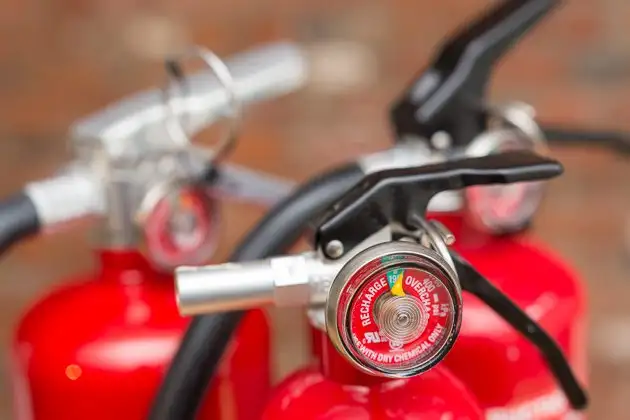
Extinguisher ratings, like 3A 40B, indicate the types of fires an extinguisher can handle. The ABC rating means it can tackle Class A (wood, paper), Class B (flammable liquids), and Class C (electrical) fires—common in homes. Class D and K fires, from metals or cooking oils, are less typical for home use.
Experts recommend ABC-rated extinguishers for home use, as they cover the most common fire types. Using the wrong extinguisher can worsen the fire or cause injury, such as using water on an oil or electrical fire.

ABC-rated extinguishers typically use monoammonium phosphate as the agent, which is affordable and effective, though models with Halon or Halotron agents can cost up to $500. These pricier options leave no residue and are noncorrosive, making them ideal for sensitive environments like aircraft or areas with expensive equipment.
The numbers on an extinguisher indicate its capability: the number next to A represents the water equivalency (each number equals 1¼ gallons), and the number next to B shows the coverage area in square feet. For example, a 3A 40B
extinguisher provides 3¾ gallons of water with 40 square feet of coverage.
Experts recommend a manageable weight, typically around 10 pounds, for easy handling. Consumer Reports advises choosing the largest extinguisher you can comfortably use. The NFPA suggests a 2A 10BC extinguisher per floor, but we focused on more powerful, 3A 40BC models for added safety.
We looked for extinguishers available at major retailers like Amazon, Home Depot, and Lowe’s. Leading brands like Kidde, First Alert, and Amerex offer a solid mix of availability, affordability, and UL certification. Other brands such as Ansul and Stop Fyre are more commercial-focused and pricier for smaller models.
Our pick: First Alert PRO5
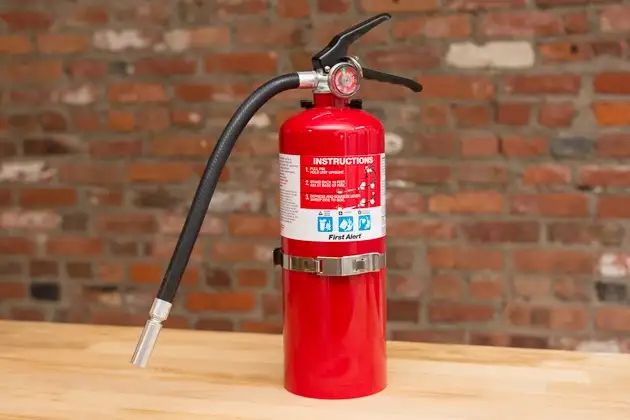
For primary fire extinguishers, we recommend the First Alert PRO5, a UL-rated 3A 40Bmodel that exceeds NFPA recommendations but has the same size and weight as smaller 2A 10Bmodels. It can handle common fires like wood, cloth, liquids, and electrical fires, and is rechargeable for long-term reliability and cost savings. The PRO5’s 3¾ gallons of water-equivalent chemical agent can cover 40 square feet, offering more firefighting power without added weight. While similar to the Amerex model, the PRO5 is more widely available at retailers like Ace Hardware and Lowe’s.
Rechargeable extinguishers like the PRO5 offer better quality and long-term value. Though they cost a little more upfront, they’re reliable and can be refilled after use, unlike disposable models, which must be replaced after each use. Additionally, all our picks feature metal valves for durability, avoiding issues seen in plastic-valve models, which have had recalls. For long-term maintenance, rechargeable models need an inspection every six years, while disposable ones must be replaced after 12 years. If used, rechargeable extinguishers only require a refill, making them more cost-effective over time.
A rechargeable extinguisher also allows for hands-on training at home, so you and your household can practice using it. Familiarizing yourself with how the extinguisher operates and feels in your hand can make all the difference in an emergency. Just like employers offer extinguisher training, it’s a smart idea to do the same at home.
The PRO5 includes a basic hanging bracket, but for added security, First Alert sells a more robust bracket for around $15.
Flaws but not dealbreakers
The First Alert PRO5 uses monoammonium phosphate, which can be corrosive to metals if not cleaned up immediately. It’s slightly acidic when in contact with moisture, which can lead to corrosion, particularly in kitchens with metal appliances. While some non-corrosive alternatives exist, they’re only rated for B and C flames (flammable liquids and electrical fires), not A flames (wood, cloth, paper). For kitchen fires, experts recommend using an ABC extinguisher, as it covers the most common types of fires without the need for second-guessing.
Runner-up: Amerex B402

If the First Alert PRO5 is unavailable, we recommend the Amerex B402. It’s also a rechargeable, UL-rated 3A 40B
extinguisher with a metal valve, similar in size and weight to the First Alert. The only downside is that Amerex is typically sold through fire-protection companies, making it harder to find in stores. Performance-wise, both models are equally effective, so if you find the Amerex at a better price, it’s a great alternative.
Also great: First Alert HOME1 or Amerex B417

For a smaller, supplemental extinguisher, we recommend the First Alert HOME1 (also available in a four-pack) or its silver variant, the DHOME1. This UL-rated 1A 10Bmodel weighs about 5 pounds and is effective for small fires. Fire marshal Joseph Keenan suggests placing a 1A 10Bextinguisher in the kitchen. The Amerex B417T is another solid option with similar features to the HOME1, and if it’s available at a lower price, it’s a good alternative.
Maintenance

It’s important to check your extinguisher regularly, ideally once a month for workplace models. Simply confirm the gauge shows it’s pressurized (green zone), ensure there’s no visible damage, and that it’s easily accessible. This quick check can be done while passing by. Also, be aware of the expiration date and schedule maintenance; after six years, a licensed technician should inspect rechargeable models.
